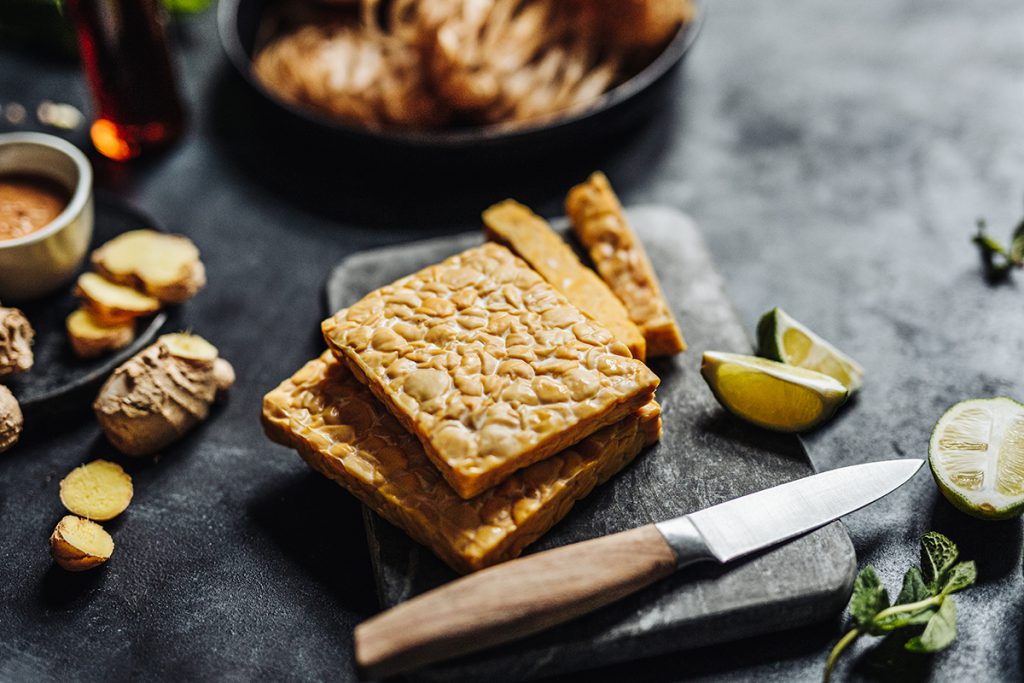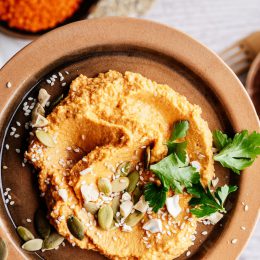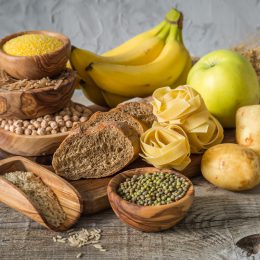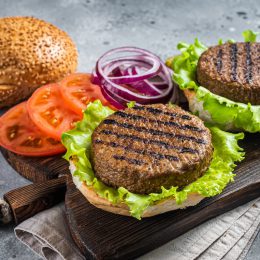New Foods on the Block: The 5 Superfoods You Have to Try
It’s easy to fall into a routine of eating the same foods over and over again. But it’s good to branch out and try something new.

Now might be a good time to think beyond your usual staples and shake up your shopping cart with some new-to-you foods. It will make mealtime exciting again — and make it easier for you to get a greater variety of nutrients that support good health.
These fresh picks are the culinary treasures you should put on your radar.
Healthy eating and fitness go together! SilverSneakers classes and events are happening right now at participating gyms, online through SilverSneakers LIVE, and at community centers near you. Activate your free online account to get started.
New Superfood #1: Black Lentils
These little lentils are also called “beluga lentils” because they look a bit like whale caviar. They have a striking jet-black skin and are less earthy tasting than more common green and brown lentils. They also have a thicker skin that helps them hold their shape better when cooked compared to red or green varieties of lentils.
Black lentils are small but mighty. They pack about 11 grams of fiber in a 1/3 cup serving. That’s about a half to a third of your daily fiber needs. The recommended daily allowance (RDA) of fiber for adults over 50 is 21 grams for women and 30 grams for men.
That same 1/3-cup serving also has about 10 grams of plant-based protein, plus other important nutrient for older adults like folate, iron, potassium, and magnesium.
Their high protein makes them a great meat substitute in vegetarian meals. A recent study in JAMA Internal Medicine reported that replacing some animal-based proteins like beef and chicken with plant-based proteins, like black lentils, may lower your risk of death from heart disease.
How do I use it? Their small size means they cook much faster than beans. Simmer black lentils in a pot of water for about 20 minutes until slightly tender, then drain. Cooked lentils will keep in the fridge for several days.
You can add them to salads, stews, chili, and soups. They also make a great meat-free stuffing for tacos or baked potato. Or simply toss them with roasted vegetables and dressing for a quick meatless meal.
New Superfood #2: Nutritional Yeast
You may know yeast as an ingredient in bread. Nutritional yeast is made from a similar bacteria, but it’s not active, so it has no leavening powers. It’s made by growing the yeast on a sugar-rich medium, like molasses, for several days. After this growth period, the yeast is heated (pasteurized) and then dried for packaging.
It’s a staple in a lot of vegetarian and vegan cooking because it’s packed with B vitamins that can be hard to find in plant foods. In particular, it’s a good source of B12. Many older adults don’t get enough B12 because you don’t absorb as much of it from food as you age.
Vitamin B12 is important for making red blood cells and maintaining a healthy nervous system. A deficiency can put you at risk for energy-sapping anemia.
Nutritional yeast also has a cheese-like flavor that can add rich umami to plant-based dishes. That’s because it’s naturally high in glutamate, an amino acid that unleashes a Parmesan cheese-like wave of taste. That makes it a great flavoring for various dishes with fewer calories than cheese and none of the sodium of salt.
How do I use it? Nutritional yeast comes in either powder or flake form, making it easy to sprinkle on just about anything. In fact, one of the most popular ways to use it is as a low-sodium, high-flavor popcorn topping.
You can also dust it on roasted or steamed veggies, cooked rice, mashed potatoes, pizza, and soups for a burst of saltiness and cheesiness, without actually adding salt or cheese.
You’ll usually find nutritional yeast in the baking aisle and/or natural foods section of your grocery store.
New Superfood #3: Tempeh
When it comes to soy-based meat alternatives, tofu tends to get all the attention. But if you want to be a little more adventurous, give tempeh a try. It’s made from whole soybeans which are soaked, cooked, slightly fermented and then formed into a firm, meaty patty. With 20 grams of protein in a 3-ounce serving, it has nearly as much protein as meat.
The nutritional virtues of tempeh also include a big range of important micronutrients including:
- Iron
- Niacin
- Magnesium
- Phosphorus
- Immune-boosting zinc
And the fermentation process that tempeh goes through may help your body absorb and use those crucial nutrients. Look for tempeh in the refrigerated section of supermarkets and health food stores, near where tofu and other meat alternatives are found.
How do I use it? Tempeh soaks up flavors, so pair it with flavorful sauces and spices. Try marinating plain versions of tempeh just as you would steak and other proteins and then grill, bake, pan-fry, or stir-fry.
Use cooked tempeh in pasta dishes, salads, sandwiches, and tacos. Or crumble a block with the large holes of a box grater and use the grounds to make a meat-free chili or spaghetti sauce.
New Superfood #4: Hemp Seeds
Hemp seeds come from the cannabis plant. But they don’t contain any of the psychoactive compounds in marijuana. What they do contain is an abundance of great nutrition.
They are a rich source of heart-healthy omega-3 fats, specifically alpha-linolenic acid (ALA). A large study published in The BMJ linked a high intake of ALA to a 10 percent lower risk of early death and an 8 percent lower risk of death from cardiovascular disease.
Hemp seeds also contain more protein than most other seeds and nuts — 10 grams in a 3-tablespoon serving. And, they’re an excellent source of magnesium, B vitamins, and iron. Many older adults struggle to get enough iron. And low iron status can lead to fatigue and poor brain functioning. Adding hemp seeds to your day can help you get the iron you need.
Subscribe to our newsletter
It's quick and easy. You could be one of the 13 million people who are eligible.
Already a member? Click to discover our 15,000+ participating locations.
Follow Us
As for taste, hemp seeds have a great flavor that’s like a cross between sunflower seeds and pine nuts.
How do I use it? Adding hemp seeds to your day is easy. You can sprinkle them onto your oatmeal, yogurt, cereals, salads, toast — anything really. You can also incorporate them into baked goods or blend them into smoothies.
New Superfood #5: Kefir
This fermented milk drink comes from Eastern Europe. But it’s showing up in more American dairy aisles these days — and you should take notice.
Like yogurt, kefir contains beneficial bacteria called probiotics that are good for your gut. But Kefir’s unique fermenting process gives it a lot more probiotics than yogurt. So by consuming kefir you are fertilizing your digestive tract with a bounty of good-for-you critters that can support digestive and immune health.
Like milk, kefir is a good source of bone-supporting calcium and vitamin D. Plus, it delivers potassium which can help keep blood pressure numbers in a healthy range. Flavored versions typically have a fair amount of added sugar that can negate some of the health benefits, so it is optimal to select plain.
How do I use it? You can pour it into a glass and drink straight up. It’s consistency and flavor is similar to buttermilk. You can find flavored versions in the store, too, but check the added sugar content. You could also pour it over a bowl of granola, or use it as a base in your smoothies. It’s a great replacement for buttermilk in recipes like pancakes and biscuits (but keep in mind that cooking will likely kill off the beneficial bugs in kefir). Or use it to create a creamy salad dressing like ranch.
Recommended reading: Healthy Gut Microbiome: The SilverSneakers Guide
See our sources:
Study on plant proteins and heart health: JAMA Internal Medicine
Fermentation and bioavailability of micronutrients: Fermentation
ALA intake and heart disease: BMJ
Activate Your FREE SilverSneakers Online Account
Get hundreds of free SilverSneakers On-Demand videos and stay in touch with us by creating your free online account. You don’t have to be a SilverSneakers member to get on-demand workout videos, health and fitness tips from SilverSneakers, and more.
SilverSneakers members can go to thousands of nationwide gyms and fitness locations, plus take SilverSneakers LIVE online classes led by specially trained instructors and designed for all fitness levels and abilities – at no additional cost. If you have a Medicare Advantage plan, it may include SilverSneakers. Check your eligibility here.
Already a member? Get your SilverSneakers member ID, search for locations near you, and all the health and wellness resources you need by logging in to your online member account here.





